The RV Atlas Podcast

Planning an Epic Camper Van Trip Across the Big Island of Hawaii
Have you ever dreamed about renting a campervan and going on a road trip across the Big Island of Hawaii? The trip planning might seem overwhelming at first. However, this travel guide has everything you need to kickstart your planning, including camper van rental information, campground recommendations, a sample itinerary, phenomenal sites to see, and the best places to eat and drink.
This post is based on notes from Lauren Ember from @afamwithavan and on one of her podcast appearance on The RV Atlas. All photos are also by Lauren Eber. Thanks Lauren!
Finding a Camper Rental for a Road Trip Across the Big Island of Hawaii
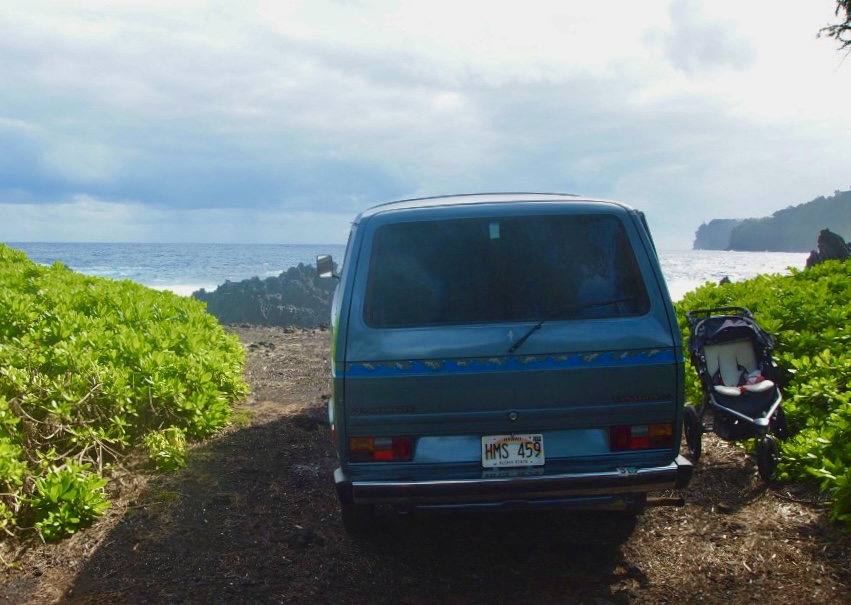
Campervan at Laupahoehoe
To get started on your Hawaiian road trip, book a flight into Hilo or Kona, which have the island’s major airports. Consider using one as a starting point and one as an ending point, allowing you to start and end your road trip in different parts of the island. Or, you can plan a grand loop and circle the whole island. While in town, pick up a rental vehicle and groceries, and you’ll be all set for adventure.
While it is common to sleep inside a camper van on the mainland, some campgrounds in Hawaii do not allow visitors to sleep in vehicles. Be sure to research this before booking a campground. If needed, plan to take along a tent and camping gear.
While there aren’t many options for renting a camper on the Big Island of Hawaii, you will find some good choices if you plan early, including:
- RV Share or Outdoorsy: These peer-to-peer RV rental companies offers the largest variety and selection.
- Campervan Hawaii: This company offers small campers, including VW Westphalias, pop-top Jeep Rubicons, and more.
- Huakai Campers: You’ll find a variety of SUVs and trucks outfitted with rooftop tents and camping gear.
To hear more tips for planning a campervan road trip across the Big Island of Hawaii, click on the media player above–or listen to the RV Atlas wherever you get your favorite podcasts.
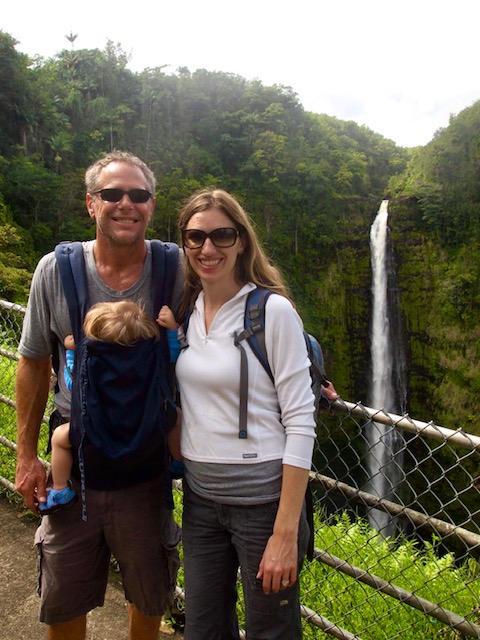
Akaka Falls
Non-Camping Accommodations on the Big Island of Hawaii
Instead of renting a camper, it’s also possible to have a grand adventure by renting a car. Across the island, you’ll find various types of accommodations available within the national park and beyond, including hotels, cabins, and glamping rentals.
- Hawaii Volcanoes National Park has hotel rooms and cabin rentals available through Volcano House.
- Check peer-to-peer rental companies like Hipcamp and Airbnb for unique accommodations.
- Hotels are abundant, especially along the Kona Coast, which is considered a tourist corridor.
Camping options are included in the sample itinerary below!

Campsite at Spencer Beach Park
Sample Itinerary for a Road Trip Across the Big Island of Hawaii
Lauren Eber and her family did an epic tour of Hawaii’s Big Island in a 1990s VW Westfalia. Here is Lauren’s recommended itinerary for a 1-2 week #vanlife road trip across Hawaii’s Big Island, making a grand loop that starts and stops in Hilo:
Southern Island
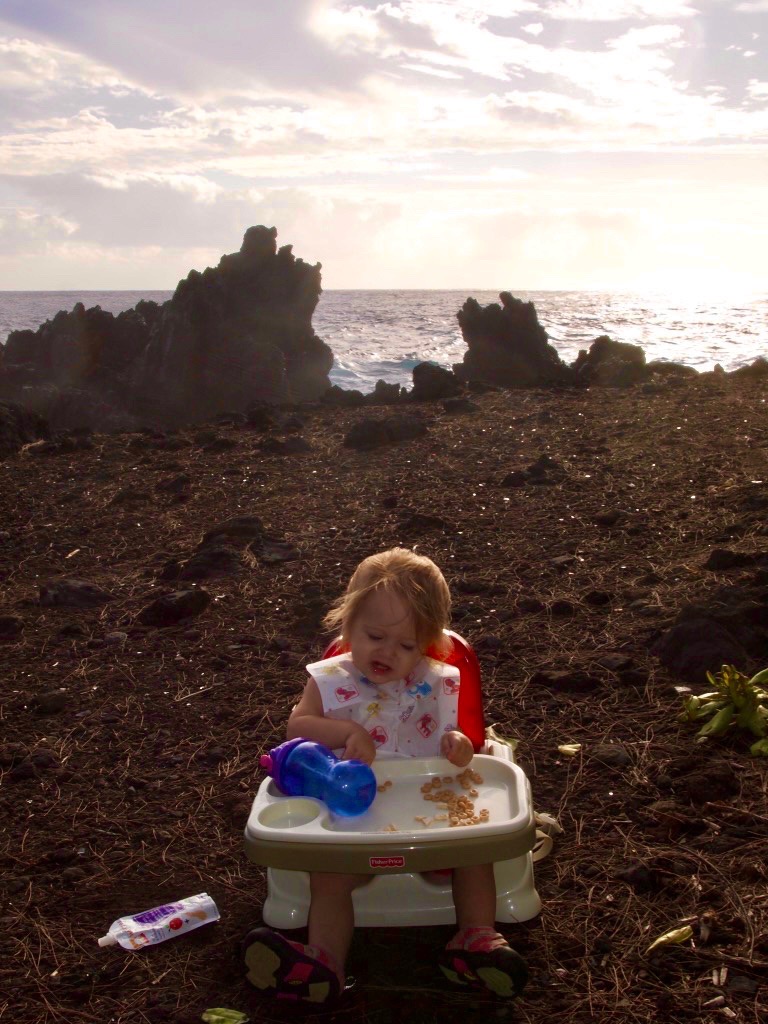
Views from a Laupahoehoe Beach Park campsite
- From Hilo, drive north about 45 minutes to Laupahoehoe Beach Park for 1-2 nights.
- Visit Akaka Falls, which is a must see, and if time permits also stop at Rainbow Falls.
- Head inland on Highway 11 towards Hawaii Volcanoes National Park
- Stay at Namakanipaio Campground in Hawaii Volcanoes National Park and use it as your home base to explore the park for 1-3 nights. Call the park’s concessionaire, Volcano House, to reserve a campsite or cabin at (808) 756-9625. Campsites are currently $15, and you can rent a tent that they will set up for you for $40. Rustic cabins and hotels rooms also available. Check out the next section for specific tips about what to see and do in the park!
- Continue along Highway 11 and head to the Punalu’u Beach Park campground for the night to explore the nearby Punalu’u black sand beach, which is famous for the sands and the sea turtles. It is also a great place to snorkel!
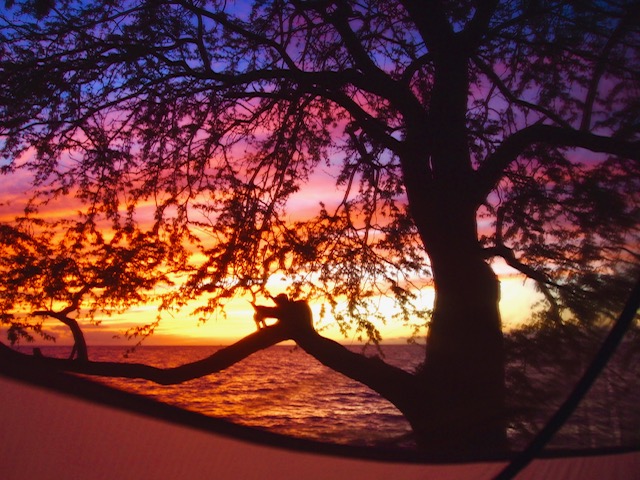
Sunset at Spencer Beach Park
- Continue heading west on Highway 11 toward Kona. Campgrounds in the Kona area tend to be on the more crowded side. For a true Hawaiian experience (with lots of families crowded on the beach front with their tents, grilling, playing music, and reveling), stay at Hookena Beach Park, in southern Kona. Or for something a little mellower (but not great swimming), camp at Kohanaiki Beach Park and watch the surfers do their thing.
- Use your Kona campground or lodging as a home base to explore this side of the island. There are endless activities and tons of tourist resources. Visit beaches, kayak, or do a night snorkel with manta rays. Visit Puʻuhonua o HōnaunauNational Historical Park and Kaloko-Honokōhau National Historical Park to learn more about Hawaiian culture and get stamps in your NPS passport. Other activities in the area include: coffee plantation tours, local farmer’s markets, authentic luaus, and surfing lessons. Visit the beautiful Kealakekua Bay marine preserve to snorkel or kayak. Check out the many restaurants and coffee shops in town!
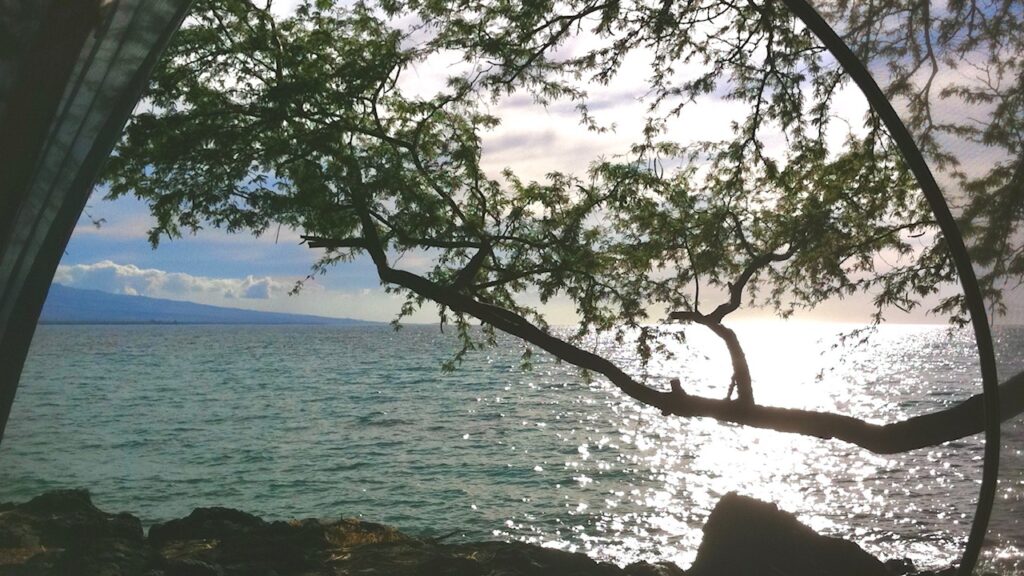
Tent view from Spencer Beach Park
- After leaving Kona, continue up the coast to the incredibly beautiful Spencer Beach Park. Camp at the edge of the world in this stunning location and enjoy the relative solitude and incredible sunsets! This campground has a very calm white sand beach, which is great for kids. It can be very windy, though! For the few dollars of a campground reservation fee, you are getting an even better view than the highest-end Big Island resorts that line this stretch of coast. From here, it’s a short drive to the Waikoloa Petroglyph Reserve or into Waimea.
- Make your way back to Hilo for the return trip home (if flying out of Hilo) via the incredibly scenic drive through Waimea and Highway 19. Along the way, if you haven’t already, check out the town of Waimea and stop for some good food. Take the .7 mile family nature walk through the forest in the Kalopa State Recreation area.
- Consider making a detour to the Waipi’o Valley Overlook. The road into the valley is closed, but you can still get to the overlook for a breathtaking view of the Waipi’o Valley. As you are making your way down the stunningly lush and beautiful Hamakua Coast, detour off of Highway 19 to take the short 4 mile stretch of the Old Mamalahoa Highway, called the Pepe’ekeo or Onomea Scenic Drive, through tropical forest, streams, and waterfalls.
- Spend another night in Laupahoehoe if needed before catching a morning flight. Alternatively, Arnott’s Lodging offers camping closer to the airport. Or, you can spend a final night in a hotel in Hilo if you have had to surrender your camping gear the day before your flight home.
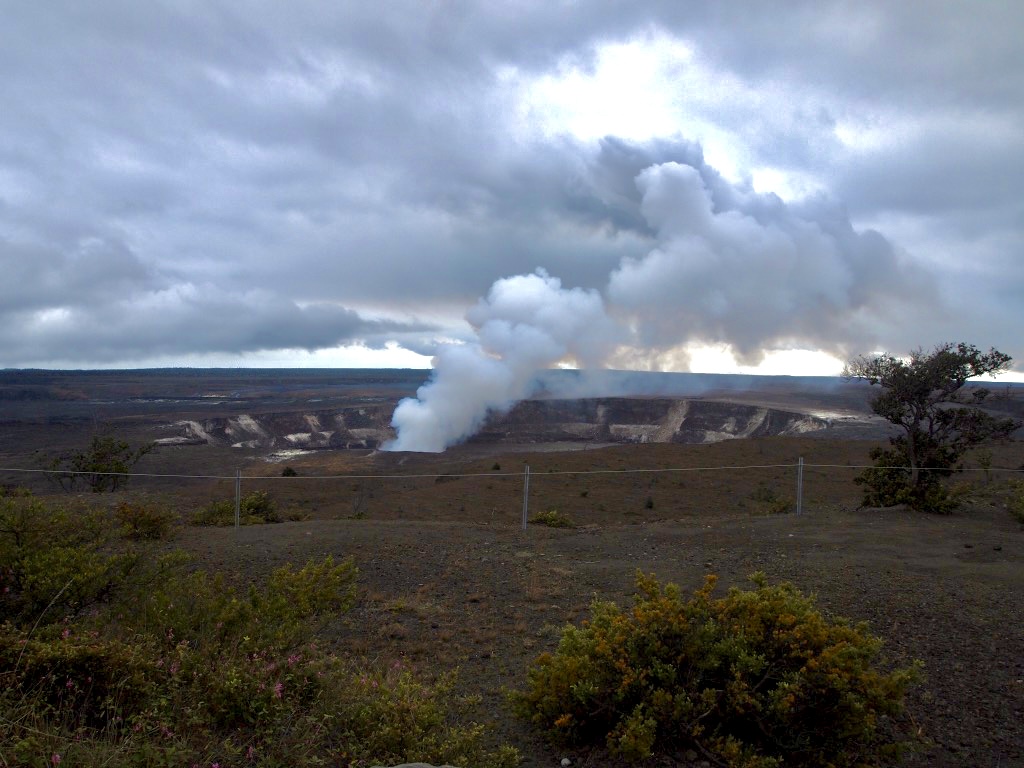
Hawaii Volcanoes Crater Rim Drive
While on a road trip across the Big Island of Hawaii, stopping to explore Hawaii Volcanoes National Park is a must. To fully appreciate the park, it’s good to first learn about the geology that created the park’s explosive attractions.
While most of the world’s volcanoes are located around tectonic plate boundaries, the islands of Hawaii were formed by a hot spot in the earth’s mantle, under the ocean. The Hawaiian plate moves at a rate of about 4 inches per year over this hot spot, which is currently located under the Big Island of Hawaii and is responsible for the ongoing volcanic activity.
Active Volcanoes
There are four active volcanoes on Hawaii’s Big Island:
- Kilauea – Located inside Volcanoes National Park, Kilauea is the most active volcano in Hawaii—and possibly on Earth. Before visiting, check the NPS website for updates about current activity, closures, and safety information. The U.S. Geological Survey also provides updates. According to Hawaiian legend, Kilauea is home to Pele, the Hawaiian goddess of fire and volcanoes. Check out this Kilauea Volcano Livestream!
- Mauna Loa – From inside Hawaii Volcanoes National Park, Mauna Loa can be seen towering above the Kilauea caldera. This is the largest volcano in the world, standing at 13,677 feet above sea level and more than 30,000 feet from its base under the ocean to its peak. It has erupted 33 times since 1843, most recently, and quite dramatically, last year, in 2022. Find Mauna Loa Volcano updates here.
- Mauna Kea – This is sometimes considered dormant, as it last erupted 3500 years ago. It can generally only be explored with an official tour, and special 4-wheel-drive vehicles are required. The Mauna Kea Observatory at the top of the mountain is considered the best place on the island for stargazing. When measured from its base under the ocean to its peak, Mauna Kea is the tallest mountain on Earth!
- Hualalai – This volcano has not erupted since the 1800s and is considered overdue for an eruption, making it potentially one of the most dangerous volcanoes in Hawaii, although seismic activity is regularly monitored. It is on the west coast of the island, near Kailua-Kona.
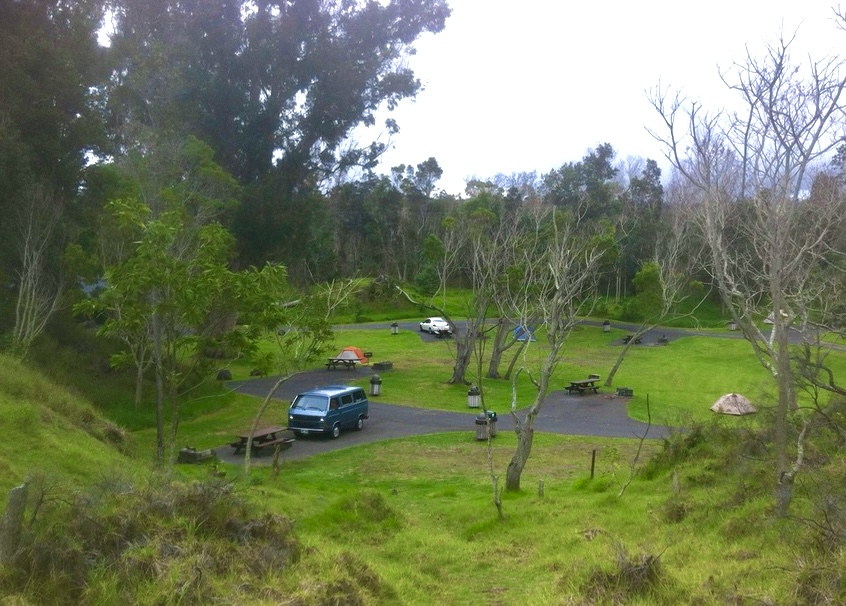
Namakanipaio Campground in Hawaii Volcanoes National Park
Because of all the active volcanoes, it is important to check conditions before and during your trip to Hawaii Volcanoes National Park and the further Big Island. Campground information is constantly changing, as places open and close regularly due to volcanic activity or effects of lava flows.
Some recent eruptions affected various areas of the island:
- In late 2022, Mauna Loa erupted for the first time since 1984. Though the eruption ended in December, some park closures are in effect months later. It’s unknown how long the closures will last. The NPS offers an interesting video chronology of the eruption.
- Kilauea also had a big eruption recently, in January of 2023. Find updates from the NPS here.
Once you arrive, start your visit at the Kilauea Visitor Center to get your bearings. You’ll find exhibits and can talk to a ranger to get the latest on eruption, hike, and activity information. Be sure to ask about ranger-led programs and pick up a Junior Ranger booklet for any kids with you.
Things to See and Do in Hawaii Volcanoes National Park
One of the best ways to explore the park is to make a scenic drive, but be sure to allow plenty of time for stops at overlooks and for any hikes you plan to do. There are two main scenic drives that hold most of the top sites: Crater Rim Drive and Chain of Craters Road.
Crater Rim Drive
Crater Rim Drive is 10.6 miles long and circles the summit caldera. Allow 1-3 hours, depending on how often you stop. This journey takes you through desert and rain forest landscapes. It has access to many scenic stops and short walks. Find more information from the NPS here.
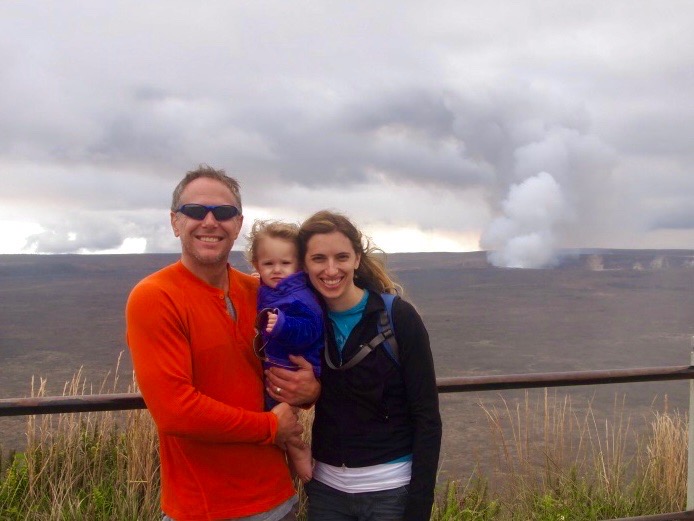
Hawaii Volcanoes Crater Rim Drive
Here are some recommended stops on the Crater Rim Drive:
- Thurston Lava Tube: This 500-year-old lava tube is reached via a half mile loop trail through a lush rain forest.
- Sulphur Banks: This paved trail has a boardwalk where volcanic gases seep from the ground. Also check out the Kilauea Overlook and picnic area.
- Uekahuna Overlook of the Halema’uma’u Crater: Take a 10-minute walk to the rim of a steaming crater, the heart of the volcano and a sacred Hawaiian cultural site.
- Kilauea Iki Crater Overlook: Find a dramatic view of the crater and the start of the popular Kilauea Iki Trail.
- Kilauea Iki Trail: This 3.3 mile-loop trail (when departing from the Kilauea Iki Crater Overlook) goes through a rain forest into a crater and across a frozen lava lake, still steaming from the 1959 eruption (yes, you read that right! It really is that adventurous!) Brace yourself for the 400 feet of elevation gain and loss. If you only do one real hike in the park, it should be this one. Check out the trail guide to learn more.
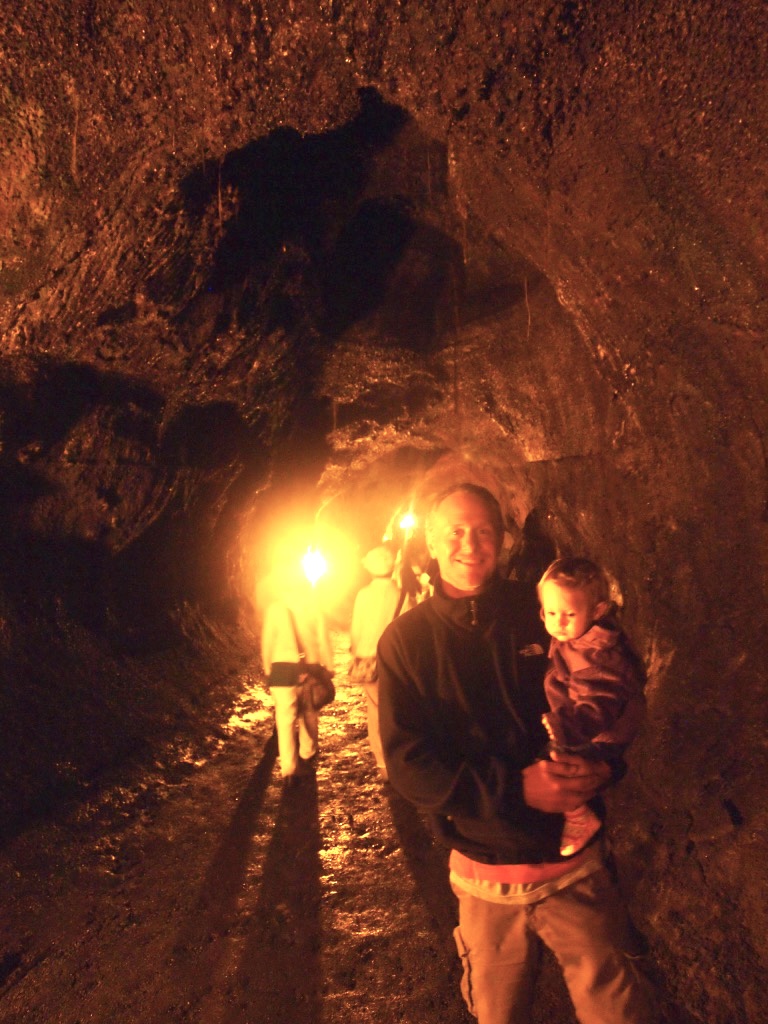
Lava tubes along Crater Rim Drive
Chain of Craters Road
The Chain of Craters Road is another exceptionally scenic drive through Hawaii Volcanoes National Park, especially when the weather is clear. This drive takes you from the crater down to sea level, heading toward the coast until the road disappears under frozen lava before you reach the ocean.
There are too many scenic stops along the road to list here, but plan to spend at least three hours round-trip exploring this 19-mile road. Allow more time if you do a lot of hiking and exploring! Here are two highlights:
- Pu’u Loa Petroglyphs: Take a 1.5-mile round-trip trail to the site of over 23,000 petroglyph images.
- Pu’u Huluhulu Cinder Cone: Take a 2.6-mile round-trip journey over the 1973-74 lava flows, starting at the Mauna Ulu parking lot.
In addition to Hawaii Volcanoes National Park, here are two more NPS sites to include on your visit to the Big Island of Hawaii:
Puʻuhonua o Hōnaunau Historical Park is a sacred site to the Hawaiian people, an ancient sanctuary for defeated warriors, along the Kona coast. This park is easily visited from Kona and a worthwhile stop. Get oriented at the visitor’s center, then head out to see the royal grounds and the Puʻuhonua o Hōnaunau ceremonial site, bounded by a massive rock wall. If time permits, hike a mile each way to the historic Kiʻilae village.
Kaloko-Honokōhau National Historical Park. Start by getting oriented at the visitor’s center and bookstore, then head to the beach to see the sea turtles and the fish trap, fish pond rock wall, and petroglyphs. This park is also easily visited from Kona, and/or combined with a day trip to Puʻuhonua o Hōnaunau.
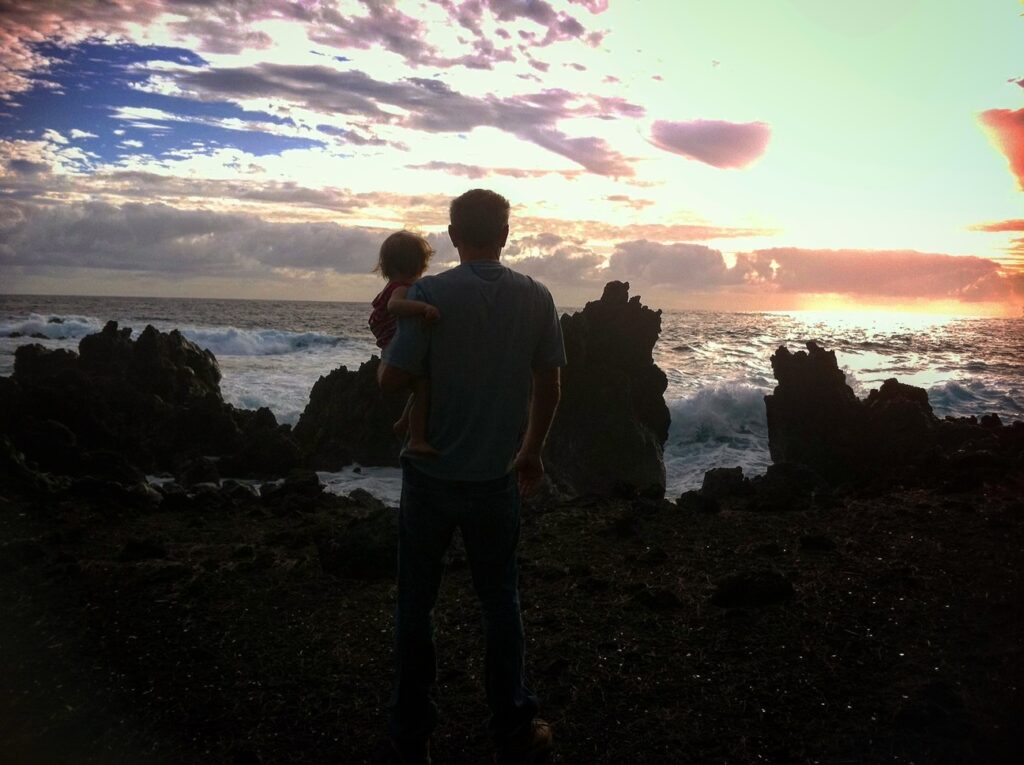
Hawaii Laupahoehoe Campsite View
Food & Drink on Hawaii’s Big Island
We can’t talk about a road trip across the Big Island of Hawaii without talking about the unique food and drink found here. Here are some tips:
- You don’t have to eat fancy to eat well on the Big Island. In fact, the fresh produce found at farmer’s markets and fruit stands offers a true taste of the island. The bounty includes coconuts, mangos, pineapple, and so much more! To get the scoop on the best spots, ask the local residents. The Big Island Guide and Love Big Island websites also have helpful info.
- Merriman’s Waimea, the flagship restaurant of chef Peter Merriman, offers farm-to-table Hawaiian regional cuisine in a cozy setting. Reservations are strongly recommended; book well in advance of your trip if possible.
- Another simple delight is coffee from the Kona region. Kona coffee is famous for good reason. While in the area, you can do tours and tastings. If you find a blend you like, you may even be able to have it shipped home! Here are some great ways to enjoy the local java:
- Kona Blue Sky Coffee offers great-tasting deliveries to sed a taste of the island home.
- Find a list of Kona coffee tours and tastings on Love Big Island’s Kona Coffee Tasting page.
- Kona Blue Sky Coffee offers great-tasting deliveries to sed a taste of the island home.
- For local brews, head to Kona Brewing Co. is a well-known beer brewery.
- Finally, shave ice is a big thing on the Big Island! Don’t miss the chance to try it!
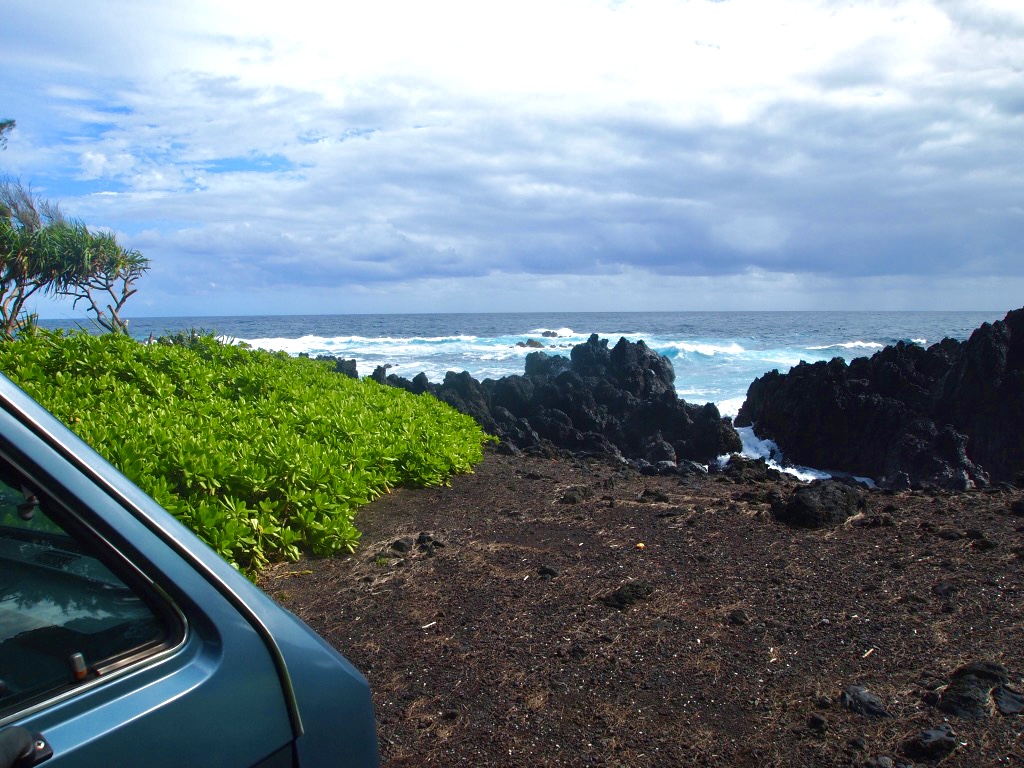
More campsite views from Laupahoehoe
Hawaii Road Trip Wrap Up
We hope you enjoyed this trip planning guide for a road trip across the Big Island of Hawaii! If your travels won’t take you off the mainland, don’t miss our our other national park information, including 35 Tips for RV Trips to National Parks and Which National Parks Have RV Hookups?
A big thank you to Lauren Eber for sharing her detailed trip notes and the fantastic photos!
Don’t forget that you can listen to a full podcast episode about Lauren’s adventures by clicking on the media player above–or listen to the RV Atlas wherever you get your favorite podcasts.
The post Planning an Epic Camper Van Trip Across the Big Island of Hawaii appeared first on The RV Atlas.






 Visit Podcast Website
Visit Podcast Website RSS Podcast Feed
RSS Podcast Feed Subscribe
Subscribe
 Add to MyCast
Add to MyCast